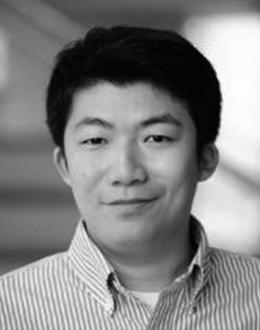
Architecture

YE Yu
Professor
Email: yye@tongji.edu.cn
C508, College of Architecture and Urban Planning, Tongji University, 1239 Siping Road
Research Fields
Urban design, urban morphology, data-informed design
Research Profile
Yu Ye, Ph.D., is an assistant professor in Department of Architecture, College of Architecture and Urban Planning, Tongji Universit. He worked as a researcher in Future Cities Laboratory, Singapore-ETH Centre, ETH Zurich and a senior research assistant in the Faculty of Architecture, The University of Hong Kong. He obtained his Ph.D. of urban design in The University of Hong Kong and MSc of urbanism in Delft University of Technology (TU Delft). As an urban designer and researcher, Dr. Ye’s research focuses on two fields. The first is applying quantitative morphological tools and big data to inform urban design and assist better place-making. The second is evidence-based urban design based on virtual reality and biometric sensors to achieve human-oriented measurements.
Grands and Awards
Hong Kong PhD Fellowship
Publications
Refereed International Articles
Ye, Y., Yeh, Anthony, Zhuang, Y., van Nes, A. and Liu, J. (2016, Online First) “Form Syntax as a contribution to geodesign -- a morphological tool for urbanity making in urban design”, Urban Design International. DOI: 10.1057/s41289-016-0010-z
Ye, Y. and van Nes, A. (2014) “Quantitative tools in urban morphology: combining space syntax, spacematrix, and mixed-use index in a GIS framework”, Urban Morphology, Vol.18, No.2, 97-118.
Ye, Y. and van Nes, A. (2014) “The spatial flaws of new towns: Morphological comparison between a Chinese new and old town through the application of space syntax, spacematrix and mixed use index”, A | Z ITU Journal of the Faculty of Architecture, Vol.11, No.2, 192-208.
Ye, Y. and van Nes, A. (2013) “Measuring urban maturation processes in Dutch and Chinese new towns: Combining street network configuration with building density and degree of land use diversification through GIS”, Journal of Space Syntax, Vol. 4, No.2, 17-37
Li, Y., Ye. Y., and Xiao, L. (2016, Online First) “Balancing Community Space Protection and Tourism Development at a Historic Site through Cognitive Map and GPS Tracking: the Case of Gulangyu, China”, Urban Design International. DOI: 10.1016/j.ypmed.2016.08.042
Li, Y., Xiao, L., and Ye. Y. (2016) “Understanding tourist space at a historic site through space syntax analysis: The case of Gulangyu, China”, Tourist Management, Vol. 52, No.1, 30-43.
Lu, Y., Xiao, Y., and Ye. Y. (2016, Online First) “Urban Density, Diversity and Design: Is more always better for walking? A study from Hong Kong”, Preventive Medicine. DOI: 10.1016/j.ypmed.2016.08.042
Refereed Chinese Articles with English Abstract
Ye, Y., Zhuang, Y., Zhang, L., and van Nes, A. (2016) “Designing Urban Spatial Vitality from Morphological Perspective – A Study Based on Quantified Urban Morphology and Activities’ Testing”, Urban Planning International (in Chinese), Vol.31, No.1, 26-33.
Ye, Y., Wei, Z., and Wang, H. (2014) “Urban Planning Response to Big Data Development”, Planners (in Chinese), Vol.30, No.8, 5-11.
Ye, Y. and Zhuang, Y. (2016) “The raising of quantitative morphological tools in urban morphology”, Urban Design (in Chinese), 2(4): 56-65.
Li, Y. and Ye, Y. (2016) “Classifying and Optimizing Community Space with collective memory through Cognitive Mapping and GPS Tracking in Gulangyu”, Architectural Journal (in Chinese), (6): 22-25.
International Conference Papers
Ye, Y. and van Nes, A. (2014) “Form Syntax as a contribution to geodesign”, AESOP Thematic Group Planning & Complexity’s 12th Meeting - Confronting Urban Planning and Design with Complexity, Manchester, United Kingdom.
Ye, Y. and van Nes, A. (2013) “The spatial flaws of new towns”, 9th International Space Syntax Symposium, Seoul, South Korea
Ye, Y. and van Nes, A. (2012) “New Ways of Spatial Modeling: Making spatial diagnosis in combining Space Syntax, Spacematrix and MXI with GIS of new and old towns”, New Urban Configurations: EAAE / ISUF International Conference, Delft, the Netherlands.
van Nes, A. and Ye, Y. (2014) “The theory of the natural urban transformation process - the relationship between street network configuration, density and degree of function mixture of built environments”, AESOP 2014: From control to co-evolution, Utrecht and Delft, the Netherlands.
 ABOUT US
ABOUT US




